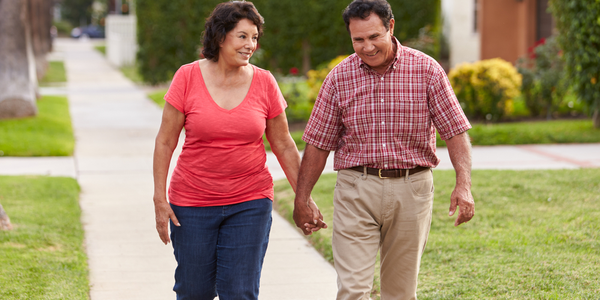Flaneuring: The Latest Trend in Walking

Whether you live in New York City, on a farm in Kansas or in a tiny town in California, walking was popular in 2020. For many of us, a walk was a safe way to enjoy the outdoors, pass the time and get some much-needed exercise.
A few people went above and beyond, though. They introduced the 21st century to a 19th-century trend: flaneuring. Never heard of it? You’re not the only one.
What is a Flaneuring?
Flaneuring comes from the French word flaneur and refers to a person who likes to stroll or saunter. The term was created to describe the habits of the nobility, who enjoyed taking walks with no destination in mind. Their intention was simply to observe and appreciate their surroundings. Sounds simple, right? Flaneuring is walking just to enjoy being outside, not to get somewhere. The only purpose is to do something, and that something is walking.
Many of us have probably been a flaneur (one who is flaneuring) without even realizing! This form of walking is hugely popular in large cities or other tourist centers where there’s much to be seen or experienced. You may have gone flaneuring on your local hiking trail, in the downtown of a city or on a beach in the tropics. Either way, if you were walking to admire the scenery and had no specific goal or destination in mind, you were flaneuring!
Some people also call these walks “wandering with intention” or being “intentionally aimless.” Both sound like a great way to get out of the house and start appreciating your surroundings.
Are there benefits to flaneuring?
Yes! Walking, including flaneuring, has many physical benefits. Here’s why you should start walking your way to fitness today:
- Daily walking reduces your risk of heart attack by 30 to 50%.
- Walking lowers your chances of developing a physical disability by 41%.
- Walking is a known treatment to reduce arthritis pain.
- Daily walking of 25 minutes per day can add up to seven years to your life.
But flaneuring also has the following cognitive benefits:
- Flaneuring increases levels of joy and decreases stress in older adults.
- Regular walking can reduce the chances of developing dementia (including Alzheimer’s) by half.
- Walking can improve your mood and help you create more social connections with fellow seniors.
The benefits of walking or flaneuring are significant. Incorporating either one into your daily routine can have a big payoff if you stay committed.
How does one flaneur?
Flaneuring is just walking, right? Yes, but there are a few things to keep in mind when taking this kind of walk. First, make sure you’re wearing comfortable clothing, including sturdy shoes, when flaneuring. The last thing you want is to feel too hot, too cold, or return home with a nasty blister.
Also, make sure you have your phone. Flaneuring can lead you to places you’ve never been before, or even get you lost if you aren’t careful! Tell someone where you’re going (as much as you can) before you leave and fully charge your phone battery to prepare for your trip. An important caveat about this tip, don’t use your phone unless you have to! Answering texts or phoning a friend pretty much negates the point of flaneuring.
Don’t forget a walking stick or cane if you need it. Even if you don’t use either on a daily basis, you might need assistance if you flaneur your way to an area with rugged terrain.
Solitude is lovely, but if you’d like, invite someone along. There’s nothing better than having a companion when you do something new. And a friend might introduce you to a whole new perspective on a familiar walk. Whether you walk alone or with a friend, we wish you happy flaneuring!
image credit: shutterstock/Monkey Business Images
- How Medicare Advantage Plans Cover Seniors’ Vision, Hearing, and Dental Needs - October 29, 2024
- 2025 Medicare Part D Changes: How to Save on Prescriptions - October 25, 2024
- Everything You Need to Know About the 2025 Medicare Changes and How They Affect You - October 21, 2024

